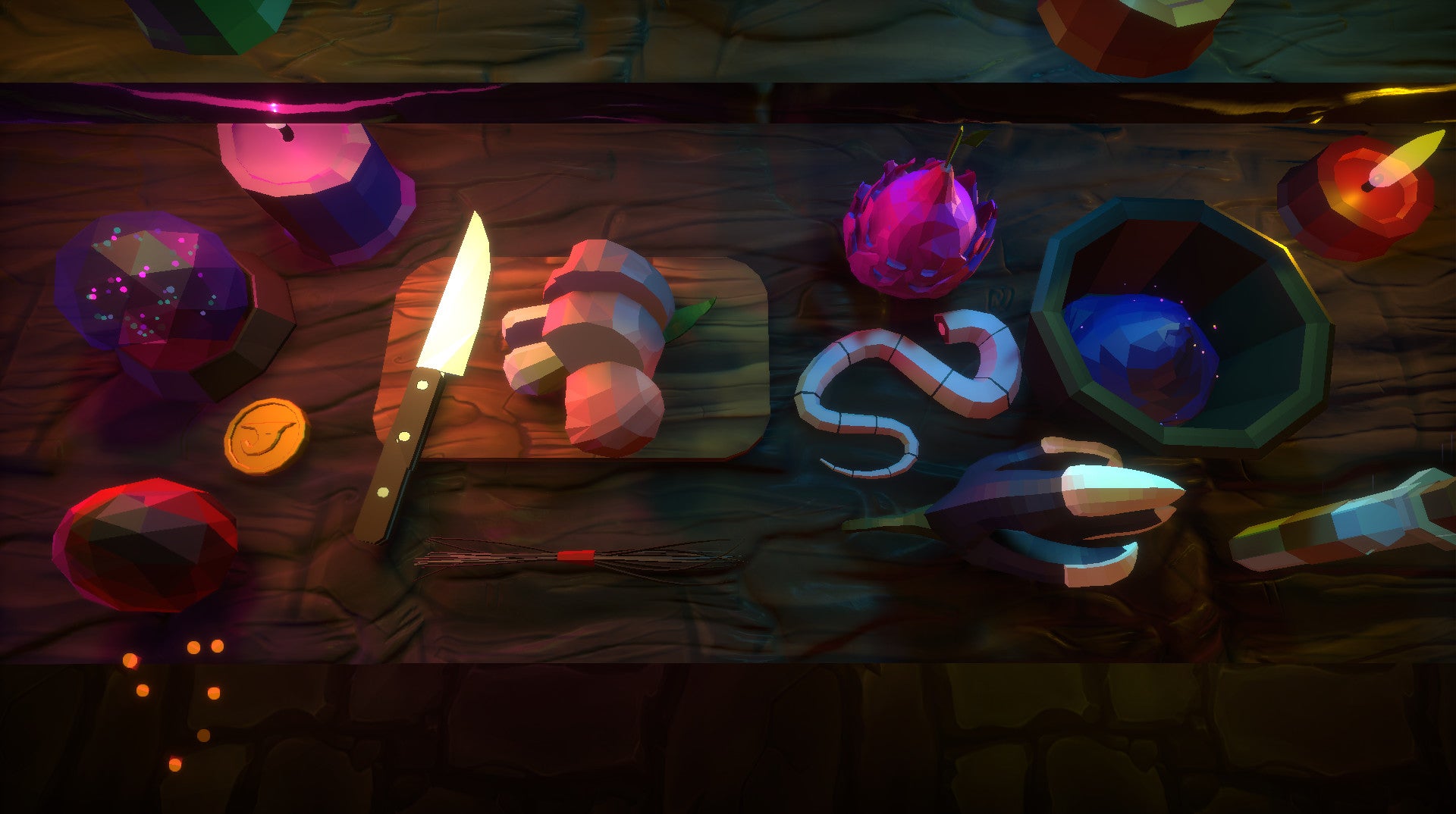In practice, Potion Tales is a 3D puzzle game. People come to you - I use the term people broadly because the tutorial level involves helping a fire spirit and soon after you’re approached by what appears to be an aggressive daisy who is the local gravekeeper - and present you with a problem. They ask for a potion to solve the problem. That’s all the steer you get. It takes some getting used to, but the Steam demo shows an impressively flexible game with a good sense of humour. Whenever someone comes in, puzzle A is consulting your recipe book and finding something you think will, to within a few degrees, do the trick. Puzzle B is finding the ingredients on your shelves and following said recipe. This latter puzzle is the most fiddly bit. Your game area in Potion Tales is a small one, with most of the room taken up with a large box shelf along the back wall. Each cubby has a jumble of different ingredients in it, with no real order, and each potion has four ingredients. Finding them can be tough, so you need a good eye - sure, some are rocks that produce smoke, so are relatively easy to spot, but the bundle of unknown various hair is a similar shade of brown to the shelves. Other ingredients, meanwhile, are a jar that you only have one of, so you musn’t lose it. Pleasingly, though, you can pick up and move items around at your leisure, so if you want you can organise all your ingredients by colour, usage or type. It’s very similar to organising your plants in Strange Horticulture. The mushrooms that look like Robin Hood hats in Potion Tales can go next to the mushrooms that cry, for example, and I also then decided to put that next to a claw that’s, somehow, the physical embodiment of being careful in an avalanche. Ingredients must be thrown in your cauldron in the right order, and the recipe will specify if something needs to be chopped, crushed or liquified. Some items make a noise when you hold them as well - the aforementioned avalanche claws sound like a chilly wind. The fire under your cauldron crackles in a very cosy way for what is essentially an unlicensed drugstore in a dungeon, and the sploosh as you toss things in is brilliant. The more fun, but arguably trickier puzzle is the first part. Your patrons are pretty happy to trust your judgement on what potion will fit their predicament best, and thus will accept whatever they give you. In that sense, there are no wrong answers, and they will usually return to you to tell you what happened. The tutorial potion is a fire spirit who has accidentally set a furry golem on fire. The first time I played the demo I went for a health potion, which I was told just healed the golem’s wounds and kept him burning potentially for ever; the second time I got a potion that worked wonders, although I will avoid spoiling the end result. My second commission was a potion to kill a gladiator and make it look like an accident, so the first time I chose one that turned him into an animal, for a laugh, and in short order I had to come up with another potion to halt the magical autopsy that would uncover my foul play (I decided to turn him into metal). I had so much fun with the demo, because while there is a right answer, so to speak, the other answers won’t throw a girder in front of your progress and tell you off for having fun. That’s so refreshing in a puzzle game like this, and combined with the tactile, methodical experience of sorting through my ingredients, I was only disappointed that the demo ended as soon as it did. That’s the point of demo’s though, I suppose. I really want to play it again and see what effect herbal tea has, in every situation.

